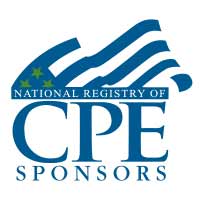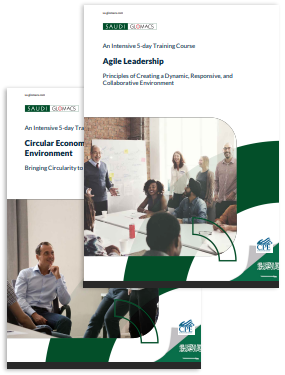An Interactive 5-Day Training Course
Reservoir Quality Analysis of Sandstone & Carbonate Rock Types
Course Overview
This GLOMACS training course is aimed at giving oil industry geologists a detailed introduction to the study of sandstone and carbonate rock-types in terms of reservoir quality. Reservoir quality analysis permits to identify the main depositional, provenance and diagenetic controls on the evolution of the poro-perm characteristics of sandstone and carbonate reservoirs (e.g. evolution of porosity vs. burial depth, mineralogical content and diagenetic environments). Examples from sandstone and carbonate oil/gas reservoirs (i.e. current East & West Africa basins) are also taken into consideration.
This training course will highlight:
- Introduction to siliciclastic and carbonate reservoirs with emphasis on controls on reservoir quality
- Sandstone composition, provenance, diagenesis, and tectonic settings
- Carbonate composition (allochems, orthochems), classification and diagenesis
- Petrographic analyses (TS, SEM, CL), XRD, QEMSCAN and integration of reservoir quality results
- Porosity classification, porosity evolution vs. burial depth, stratigraphy, composition, authigenic components and diagenetic phases/environments
- Concept of rock typing, rock typing schemes and rock typing analysis of uncored reservoir intervals (sandstone and carbonate cuttings tied to wireline logs)
Training Outline
DAY 1: Introduction to Siliciclastic Reservoirs
- Siliciclastic rocks, sediment texture, detrital components
- Sandstone classification, minerals and source areas, depositional markers
- Sandstone composition, provenance, and tectonic settings
- Grain size analysis and digital image analysis
- Depositional environments, provenance, and reservoir quality
- Definition of matrix and pseudo-matrix
- Compaction and authigenic components
- Diagenesis of siliciclastic rocks, diagenetic environments & sequences
- Concepts of SEM, EDAX and XRD analyses, chronology of diagenesis
- Concepts of CL analysis on the distribution of quartz cement
DAY 2: Reservoir Quality Analysis of Sandstone Rock-Types
- Reservoir quality definition and methods of work
- Cementation and reservoir quality
- Porosity types in sandstones
- Porosity-permeability analysis and interpretation, cuttings TS descriptions/analysis tied to wireline logs
- Estimating subsurface reservoir quality from outcrop samples
- Rock Typing, petrophysical assessment of cuttings, rock typing analysis of cuttings petro-types
- Rock Typing classification scheme(s) as from oil industry methodologies
- Rock Typing and reservoir quality
- Diagenetic controls on reservoir quality and porosity variation with depth & stratigraphy
DAY 3: Introduction to Carbonate Reservoirs
- Introduction of carbonate reservoirs
- Components of limestones, carbonate depositional environments and facies, calcite vs. aragonite seas in the geological record
- Matrix and authigenic components, taxa vs. mineralogy, classification of limestones
- Rates of carbonate production, microfossils, paleoenvironmental markers, carbonate platform facies, carbonates and sea level changes, regional carbonate petrography vs. stratigraphy
- Carbonate diagenesis: Neomorphism, compaction, marine diagenesis, meteoric diagenesis, burial diagenesis
- Diagenetic markers, carbonate diagenetic stages
- Dolomite textures and stable isotope signatures
DAY 4: Reservoir Quality Analysis of Carbonate Rock-Types
- Carbonate diagenesis and reservoir quality, dolomite texture vs. petrophysics, dolomitization models, limestone vs. dolostone reservoir quality
- Porosity in carbonate rocks, classification schemes, petrophysics by carbonate rock-types, porosity preservation, visual estimation of porosity vs. point count porosity
- Controls on reservoir quality, rock fabric and wireline logs, porosity evolution vs. geological time
- Carbonate reservoir models and reservoir quality, porosity vs. petro-facies
- Rock typing concepts, petrophysical assessment of cuttings, rock typing classification schemes, Rock typing datasheets, rock typing and reservoir quality
- Emphasis on single well or multi-well studies, with regional reservoir quality correlations
DAY 5: Examples of Siliciclastic and Carbonate Reservoirs and Practical Work
- Cretaceous siliciclastic reservoirs from north, east and west Africa
- Italian carbonate reservoirs, Angolan Pre-Salt (Pre-Aptian) reservoirs, Kenyan carbonates, Indonesian carbonate reservoirs, New Zealand carbonate reservoirs, Oman reservoirs
- Practical session in polarizing microscopy on: Texture, composition, diagenesis, porosity, and reservoir quality of siliciclastic and carbonate rocks-types
- Visual estimation of sandstone and carbonate porosity. Porosity of core samples (point count porosity) and point count porosity vs. CA data
- Differences in the controls on reservoir quality between sandstones and carbonates
- SEM/EDX/XRD images and plots
- References on petrography/petrophysics/reservoir quality for self-training sessions
Certificates
- On successful completion of this training course, GLOMACS Certificate will be awarded to the delegates
- Continuing Professional Education credits (CPE) : In accordance with the standards of the National Registry of CPE Sponsor, one CPE credit is granted per 50 minutes of attendance
Accreditation


GLOMACS is registered with NASBA as a sponsor of Continuing Professional Education (CPE) on the National Registry of CPE Sponsors. NASBA have final authority on the acceptance of individual courses for CPE credit. Complaints regarding registered sponsors may be submitted to the National Registry of CPE Sponsors through its website: www.learningmarket.org.
All Training Seminars delivered by GLOMACS by default are eligible for CPE Credit.


About Saudi Glomacs
At Saudi GLOMACS, we specialize in delivering world-class training courses in Saudi Arabia and across various international locations. Our training courses are tailored to meet the unique demands of Saudi Vision 2030 and the Human Capability Development Program, focusing on empowering Saudi citizens and enhancing workforce skills. We offer diverse courses spanning leadership, management, engineering, and technical disciplines to cultivate expertise and drive professional growth. Our flexible learning options—whether in-person, online, or in-house—ensure accessibility and convenience for individuals and organizations alike.
With over 30+ years of experience through the GLOMACS global network, we are committed to delivering innovative, results-driven training solutions. Our expert instructors combine industry knowledge with dynamic teaching methods, fostering practical skill development and long-term career success. By choosing Saudi GLOMACS, you're investing in personal excellence and contributing to the Kingdom’s sustainable economic growth and vision-driven transformation.
What do you need to learn next?
Check our list of courses or let us customize a course for you.
View courses


